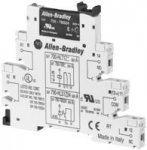Greetings everyone
Just happened to see this motor schematic. As mentioned in the note 1 that relay DC1 is an interposing relay which is controlled remotely by a DCS. I need to know what is CR1. What is its purpose in this schematic diagram?
does this have to do something with voltage drop?
Thanks
Just happened to see this motor schematic. As mentioned in the note 1 that relay DC1 is an interposing relay which is controlled remotely by a DCS. I need to know what is CR1. What is its purpose in this schematic diagram?
does this have to do something with voltage drop?
Thanks


